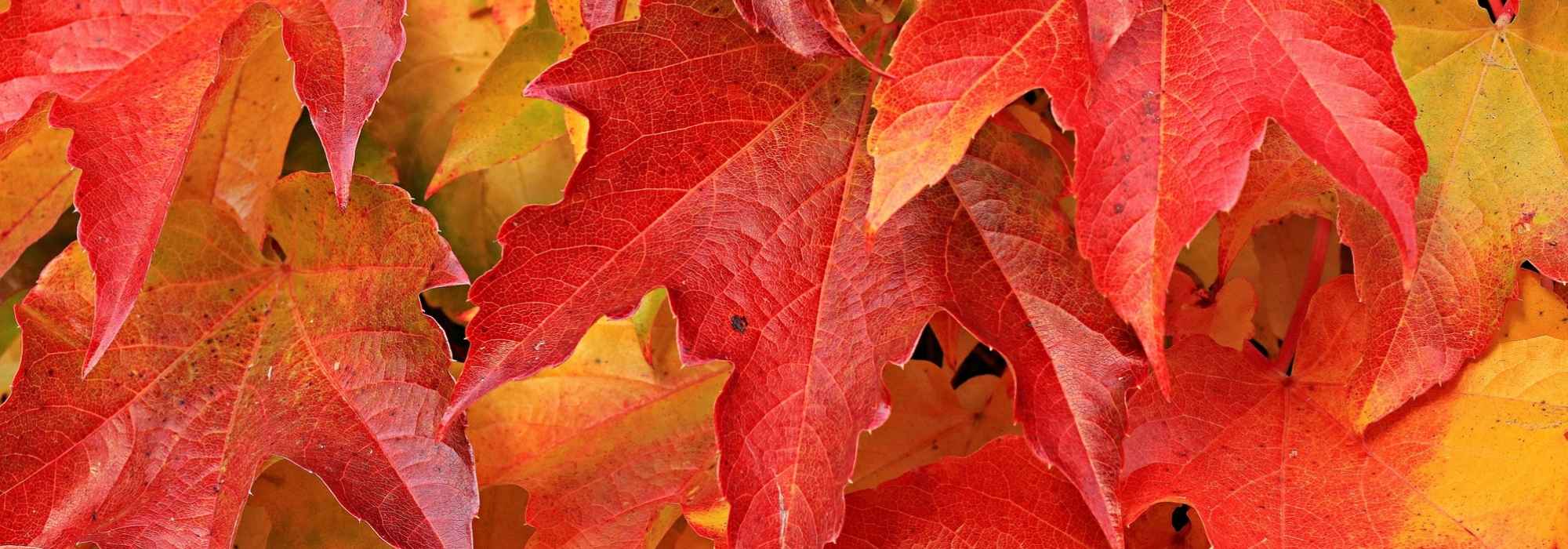
Virgin vine: planting, care, pruning
Contents
Virginia creeper in a nutshell
- Virginia creeper is the ideal climbing plant to quickly cover a wall, pergola, façade or tree
- Its deciduous foliage, more or less divided depending on variety, takes on beautiful flamboyant colours in autumn
- Depending on species, production of small blue-black inedible berries is notable
- It thrives in all aspects and grows in any ordinary well-drained soil
- Perfectly hardy, it is a low-maintenance climbing plant that is ornamental but also extremely useful across all regions
A word from our expert
Virginia creeper or ornamental vine is a climbing plant appreciated for its very rapid growth and its ability to cover walls, climb pergolas or wire mesh or any support provided to it without risk of damaging it!
Only drawback, Virginia creeper has deciduous foliage, not evergreen, which disappears in winter, not before making a flamboyant exit in a dazzling display that literally sets façades or trellises ablaze!
So common yet always surprising, Virginia creeper delights with its spectacular foliage that changes with the seasons, adopting superb shades from green to red and fiery orange in autumn.
But that is not its only asset! Depending on variety, it produces small blue-black fruits not edible but very decorative, in perfect harmony with the foliage.
Blue-fruited Virginia creeper or small-leaved Virginia creeper such as Parthenocissus tricuspidata ‘Lowii’, all are hardy, easy to grow, disease-resistant, comfortable in sun or shade, and require very little maintenance, apart from occasional pruning to stop them climbing!
From taking a cutting of Virginia creeper to best practices for planting, discover our complete guide to this exuberant but indispensable climbing plant that is both so beautiful and so useful in the garden!
Want to cover an unsightly wall? Consider our different ornamental vines!
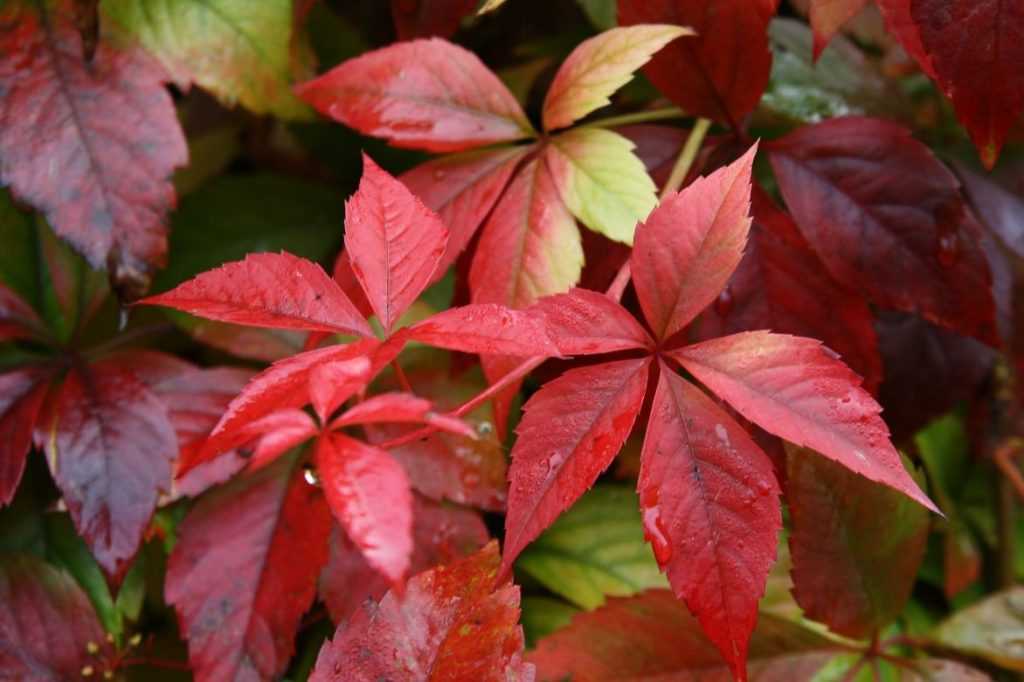
Parthenocissus quinquefolia showing beautiful autumn colours
Description and botany
Botanical data
- Latin name Parthenocissus, Ampelopsis, Vitis
- Family Vitaceae
- Common name Virginia creeper
- Flowering June to August
- Height 2 to 20 m
- Sun exposure sun, partial shade
- Soil type all, well-drained
- Hardiness -15°C-30°C
Virginia creeper belongs to family Vitaceae, like grapevine. The genus includes around forty species of lianas from Asia or North America. In our gardens we mainly encounter Parthenocissus Virginia creepers (P. quinquefolia, P. tricuspidata, Parthenocissus henryana or “Henry’s Virginia creeper” with variegated foliage and their cultivars), non fruit-bearing species that have naturalised in many countries such as France.
Under this name, other climbers are also found, such as Ampelopsis, very close to Parthenocissus, like A. glandulosa. There is also Vitis coignetiae or “Coignet’s grape” and Vitis vinifera, two ornamental vines not widely grown.
Ampelopsis are twining, winding around any support, but most, such as Parthenocissus, attach very easily, like ivy, without risk of damaging surfaces as ivy can, using adhesive or non-adhesive suckers located at tendril tips.
With very vigorous growth, the plant develops rapidly and can live for many years in the garden. It has an upright to horizontal habit. These vigorous woody climbing stems can reach up to 20 m in height and spread as far, depending on growing conditions, most often without support.
Ornamental vine is prized for its very decorative foliage, offering beautiful spring and autumn colouring, enhanced by a glossy texture.
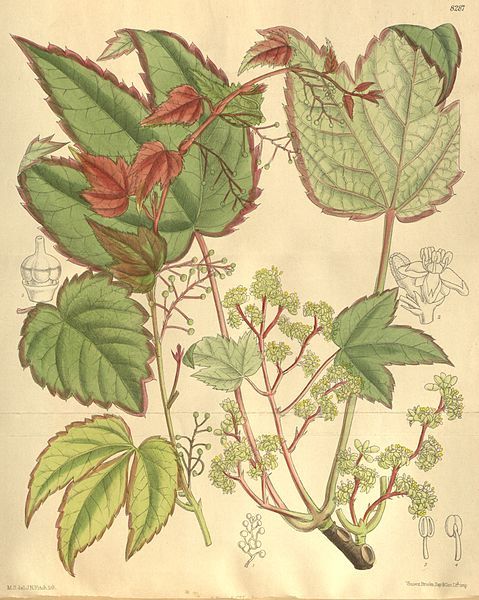
Parthenocissus tricuspidata – botanical illustration
Deciduous foliage varies in shape from one species to another. Alternate, petiolate leaves 5 to 40 cm across are composed of 3 to 7 palmately arranged leaflets, strongly dentate in P. quinquefolia, more or less trilobed and dentate in P. tricuspidata or sometimes heart-shaped.
Attractive and finely incised, they resemble vine leaves.
They are glossy, puckered or distinguished by a pretty silvery down. Through the seasons, from bud burst period to leaf fall, foliage changes, taking on flamboyant colours. From bright green to apple-green or purple at emergence, leaves then turn to coppery orange or purplish-red to scarlet in autumn, putting on an unforgettable display before falling.
Some Virginia creepers such as Ampelopsis glandulosa ‘Elegans’ charm with foliage delicately marbled with pink and white or, as with Parthenocissus henryana, display leaflets with contrasting veins.
So inconspicuous that it gave the plant its name “Virginia creeper”, flowering occurs from June to August, in the form of small clusters of inconspicuous flowers tucked into the foliage. They have 4 to 5 thick greenish petals. Unscented, this flowering is nevertheless very melliferous and much loved by bees.
In September–October, these insignificant corymb inflorescences give way, in some species such as Ampelopsis, to a fine fruiting of slightly glaucous berries, dark blue, purple-violet, reddish-violet, sometimes turquoise when ripe, 4 to 8 mm in diameter. Gathered in small clusters, these colourful berries attract the eye, resembling little porcelain beads set on a bed of finely cut leaves.
Virginia creeper does not produce edible fruit; unlike grapevine, its berries are inedible to humans but much appreciated by birds in autumn.

Some Virginia creeper foliage: Parthenocissus tricuspidata ‘Lowii’, Parthenocissus quinquefolia, Ampelopsis glandulosa ‘Elegans’ and Vitis vinifera ‘Purpurea’
Perfectly hardy, sometimes well beyond -15°C, undemanding, Virginia creeper proves very accommodating regarding soil and exposure. It thrives in sun, where its colours will be enhanced, and in ordinary soil, not too dry to moist but well-drained, neutral or slightly calcareous.
Virginia creeper is a very “clingy” climber as it attaches easily to any support. Train it up a façade, on a large tree or a bush, against an old wall at the back of a border. It is ideal to dress quickly fences, arbours and pergolas, to which it will cling with its tendrils.
Foliage of creepers often shelters a varied fauna of insects and small birds that make their nests there.
Main species and varieties
Ornamental vines, or virgin vines, include a range of climbing deciduous plants whose most common in our gardens are Parthenocissus, notably Parthenocissus quinquefolia, P. tricuspidata and henryana, and Ampelopsis which produce small decorative berries in astonishing colours. They are distinguished from true vines of the Vitis genus, the latter being grown for grapes.
Less commonly, other ornamental vines are found such as Vitis coignetiae.
All attach easily to walls thanks to their tendrils and have large leaves that take on beautiful flamboyant colours in autumn.
Choice of a virgin vine depends essentially on foliage colour, hardiness which varies by species and covering power at maturity.
Most popular
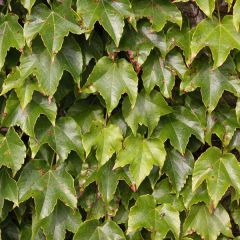
Parthenocissus tricuspidata Veitchii - Boston Ivy
- Flowering time August, September
- Height at maturity 10 m
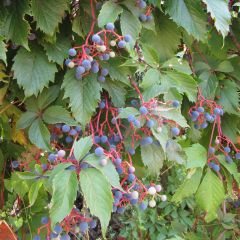
Parthenocissus quinquefolia- Virginia Creeper
- Flowering time July, August
- Height at maturity 15 m
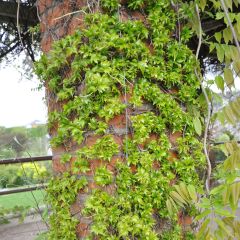
Parthenocissus tricuspidata Lowii- Boston Ivy
- Flowering time August, September
- Height at maturity 4,50 m
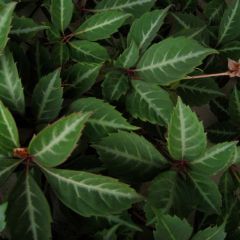
Parthenocissus henryana
- Flowering time August, September
- Height at maturity 7 m
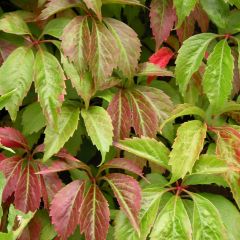
Parthenocissus quinquefolia Engelmannii - Virginia Creeper
- Flowering time August, September
- Height at maturity 12 m
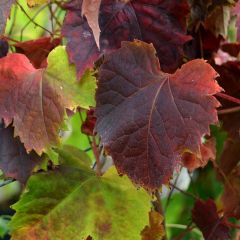
Parthenocissus tricuspidata Atropurpurea- Boston Ivy
- Flowering time August, September
- Height at maturity 15 m
Our favourites
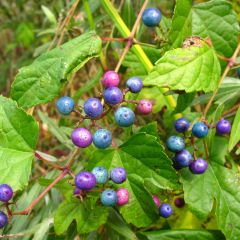
Ampelopsis glandulosa var. maximowiczii
- Flowering time July to September
- Height at maturity 4 m
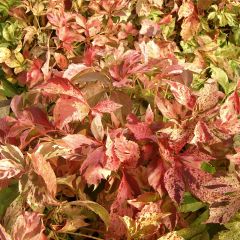
Parthenocissus quinquefolia Star Shower- Virginia Creeper
- Flowering time August, September
- Height at maturity 10 m
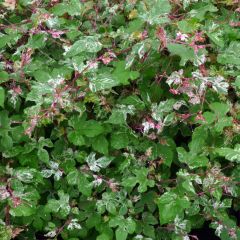
Ampelopsis glandulosa Elegans
- Flowering time July to September
- Height at maturity 4 m
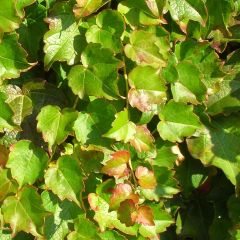
Parthenocissus tricuspidata Minutifolia- Boston Ivy
- Flowering time August, September
- Height at maturity 3,50 m
Another interesting species
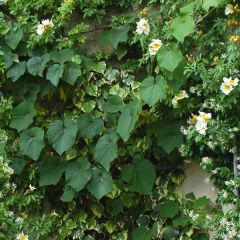
Vitis coignetiae - Ornamental Vine
- Flowering time July
- Height at maturity 12 m
Discover other Parthenocissus - Virginia Creeper
View all →Available in 2 sizes
Available in 1 sizes
Available in 1 sizes
Available in 1 sizes
Available in 2 sizes
Available in 2 sizes
Available in 1 sizes
Available in 2 sizes
Available in 2 sizes
Available in 1 sizes
Planting
Where to plant Virginia creeper?
Not very frost‑sensitive, with excellent hardiness, Virginia creeper tolerates frosts from −15°C to sometimes −28°C, depending on species, and can be planted in all regions.
Undemanding regarding exposure, it thrives in non‑scorching sun, which will preserve leaf colouration, especially that of variegated varieties, as well as in partial shade or even full shade.
While this climbing plant is adaptable to soil type and will do well in good neutral garden soil, it prefers calcareous clay soils, even stony ones, that are fairly fertile and well‑drained and retain some freshness in summer.
Once established, it can withstand occasional droughts.
Train young Ampelopsis until their tendrils attach themselves.
Virginia creeper needs space and a support scaled to it to develop well: mature spread covers 2 to 10 m². It is perfect for covering vertical surfaces — and also horizontal surfaces — with unrivalled lushness. And, unlike ivy, it does not damage wall surfaces or roofs.
Depending on its mature development, it can be installed on a pergola, an arbour, a trellis to shade a terrace, to hide an unsightly wall or façade, climb a tree, or to cover low walls, columns or shaded banks.
Some smaller varieties can even be grown in a pot on the terrace.
As a bonus, it helps protect buildings from intense heat and the rigours of winter.

Association of a Virginia creeper and a Hydrangea petiolaris (West Dean Gardens near Singleton, West Sussex – Photo Leonora Enking)
When to plant?
Virginia creeper is planted in spring, from March to April after frosts, or preferably in autumn from September to November.
How to plant Virginia creeper?
In open ground
Virginia creepers climb between 3 and 20 m high depending on species. Given the often substantial development and very rapid growth of this vigorous climber, one plant per m² will be enough to cover an area in a few years.
- Soak the rootball in a bucket of water
- Loosen soil thoroughly
- Dig a hole 2 to 3 times wider than the rootball
- Spread a layer of gravel at the bottom of the planting hole to ensure good drainage
- Mix a shovelful of potting compost or well‑rotted compost into the excavated soil
- Backfill
- Water well during the first year after planting
- If necessary, train vines with tendrils onto the support; after one or two years they will attach themselves
In a pot
- Hydrate the rootball by placing the pot in a tub of water
- Lay a drainage layer at the bottom of the container (clay balls, gravel…)
- Plant in a mix of potting compost and garden soil
- Water
Read also
When and how to prune Virginia creeper?Maintenance, pruning and care
Good news: virgin vine grows without requiring much care! Moreover, no parasitic organisms are known to affect it, nor any significant disease. Ornamental vines are not very susceptible to downy mildew.
Water during the first summer to ensure good establishment, afterwards it will require no care.
As with many climbing plants, at the start, help its stems to get going. Once well established, after one or two years, it will manage on its own.
Pruning virgin vine
This climbing plant grows very quickly and has the drawbacks of its virtues… It can quickly become very invasive, blocking gutters, lifting tiles or exceeding limits of the allocated territory. It is considered invasive in some countries. The main maintenance therefore lies in pruning without hesitation to control its spread. It may require two prunings a year, in winter and in summer.
- Prune vigorously in February, cutting back severely.
- Summer pruning allows, if needed, to remove dead or poorly oriented shoots.
→ Find out more in our tutorial : When and how to prune virgin vine? and How to remove virgin vine from a façade?
Also discover diseases and parasitic pests of virgin vine in our advice sheet.
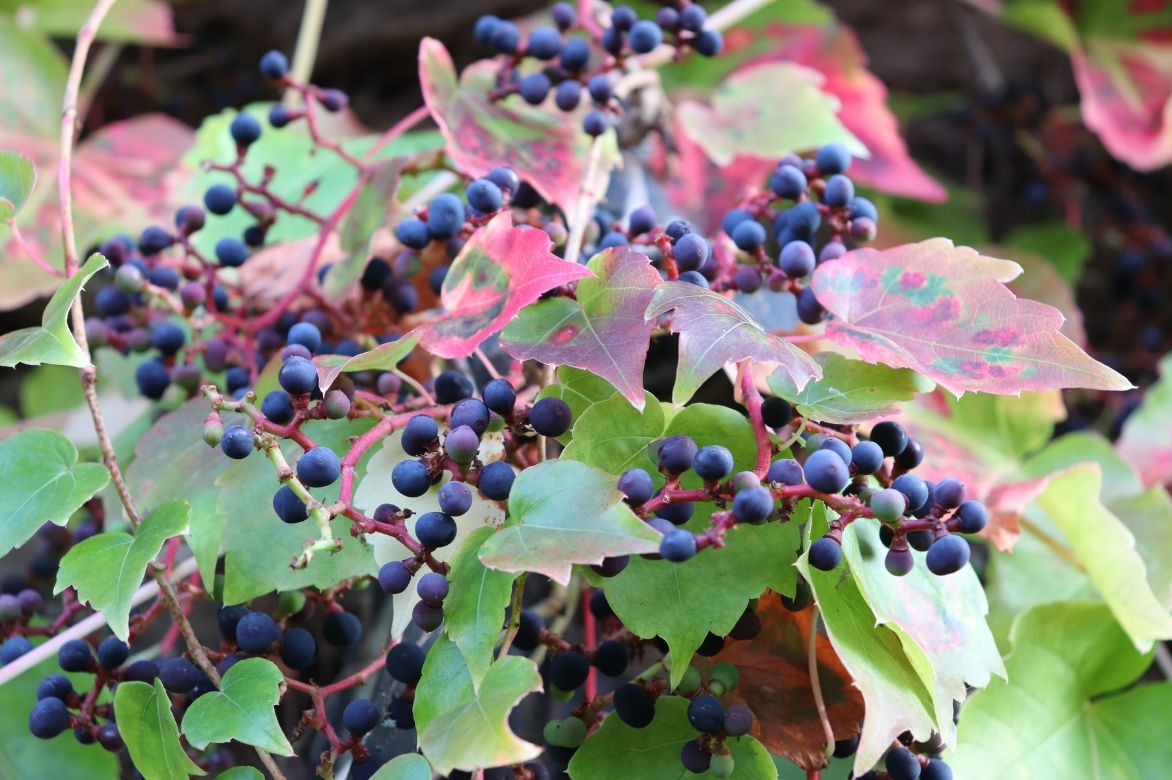
Fruiting (here Parthenocissus tricuspidata) is very decorative!
Propagation : cutting, layering
Taking a cutting of Virginia creeper
This is the simplest and least tedious method to multiply Virginia creeper. Carry out in June, in August–September or at end of winter.
- Take cuttings 10 to 15 cm long with 3 or 4 buds
- Plant them in light, sandy, well-draining substrate leaving one bud exposed
- Keep regularly moist with a sprayer
- Place them in buckets as soon as they have formed roots
- Overwinter them frost-free, under a cold frame if you take these cuttings in autumn
- Plant out in open ground next spring
Layering Virginia creeper
- At the end of autumn, bend one low shoot down towards the ground
- Dig a small furrow 20 cm long close to mother plant
- Bury a portion bearing 3–4 buds to encourage rooting
- Stake the above-ground part then backfill the hole
- In the following autumn, separate the layered shoot from mother plant by cutting the stem where it enters the soil.
→ Find out more in our tutorial How to propagate Virginia creeper?
Companion planting with Virginia creeper
If Virginia creeper often holds its own and can be hard to pair, it is not averse to combinations! It’s the ideal solution for dressing a garden wall! Pair it with summer-flowering climbers such as clematis or passionflowers to add whimsy and contrast.
Rose flowering will also be highlighted by changing hues of Virginia creeper foliage.
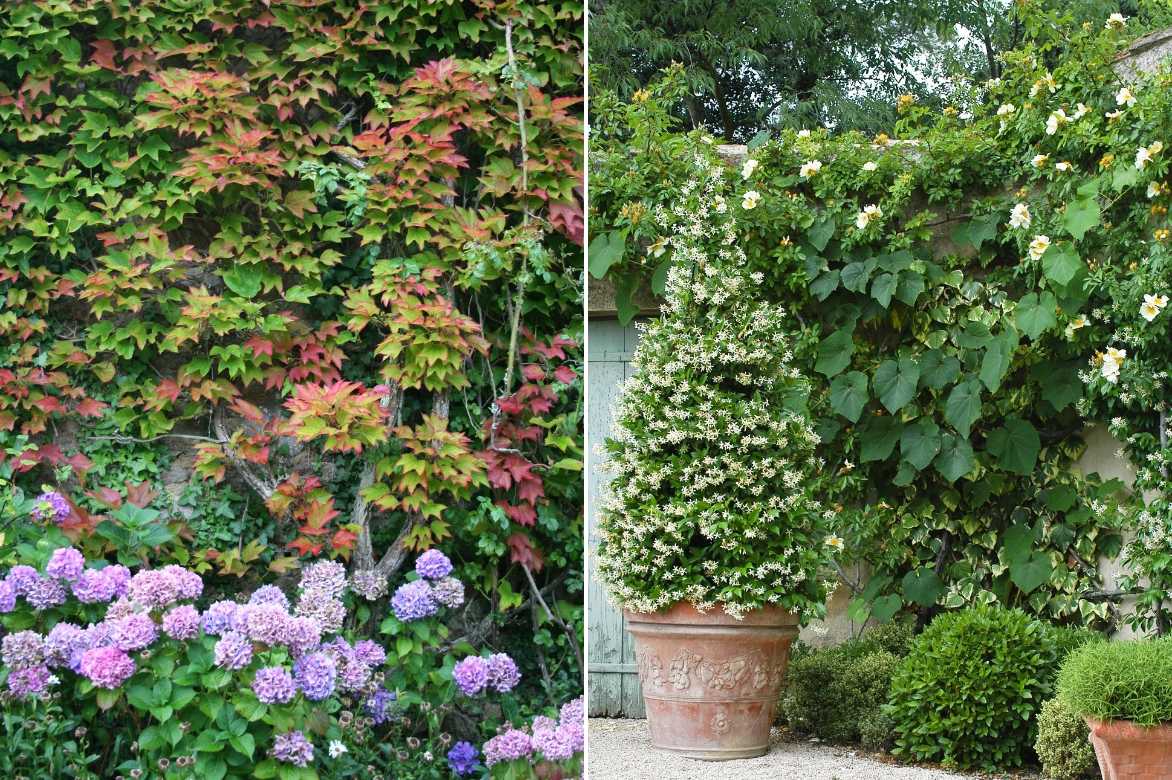
Virginia creeper on a wall, used as a quick fix to hide blemishes with Hydrangeas / Vitis coignetar, Hedera and Rose ‘Mermaid’ on wall
This wonderful climbing plant offers striking colour contrasts with its relatives, so pair ornamental vines together!
Their colours combine particularly well as a backdrop in a red-and-black garden with purple or very dark green foliage of elders, a beech or certain Cotinus.
Pair the ivy with Virginia creeper; together they’ll mask imperfections!
Useful resources
- From the blog, discover different ornamental vines
- Find our tips to grow a virgin vine in a pot.
- A garden wall: how to dress it?
- Perfect for dressing unsightly walls, trellises or pergolas in the garden, discover all our climbing plants
- Discover how to choose a virgin vine with Olivier’s advice
- Subscribe!
- Contents
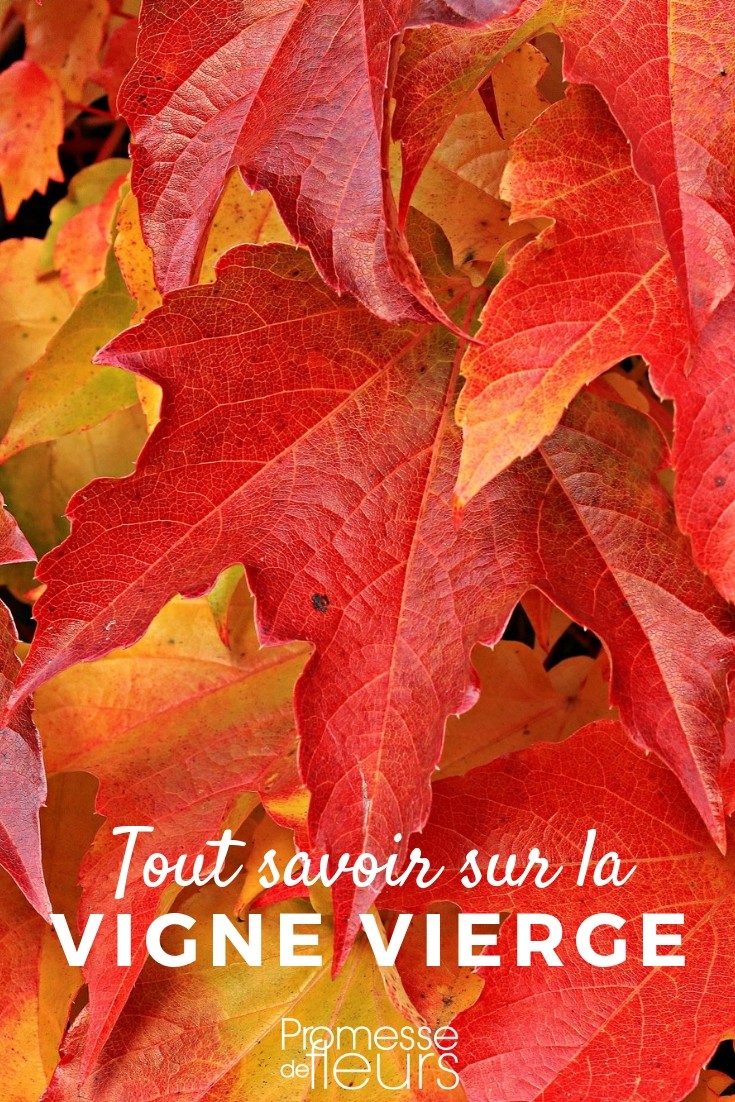
































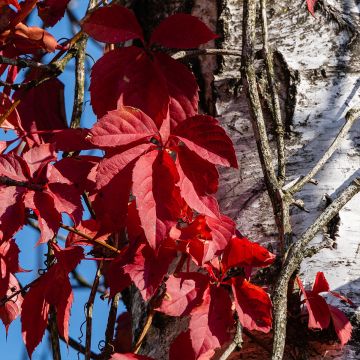

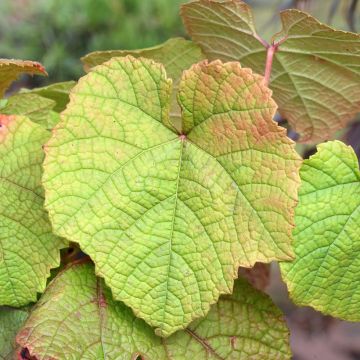

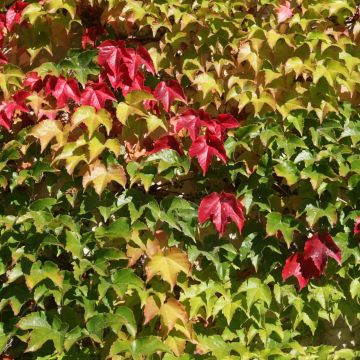

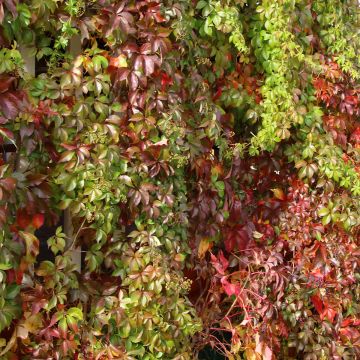
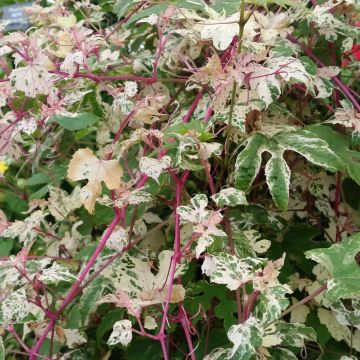
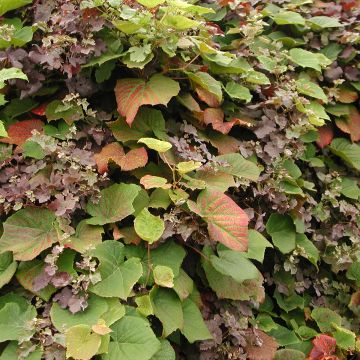
Comments